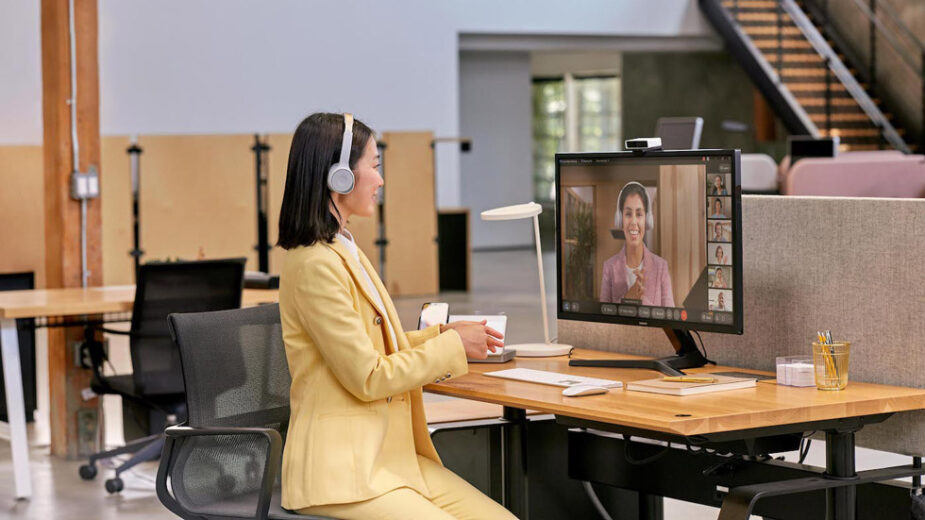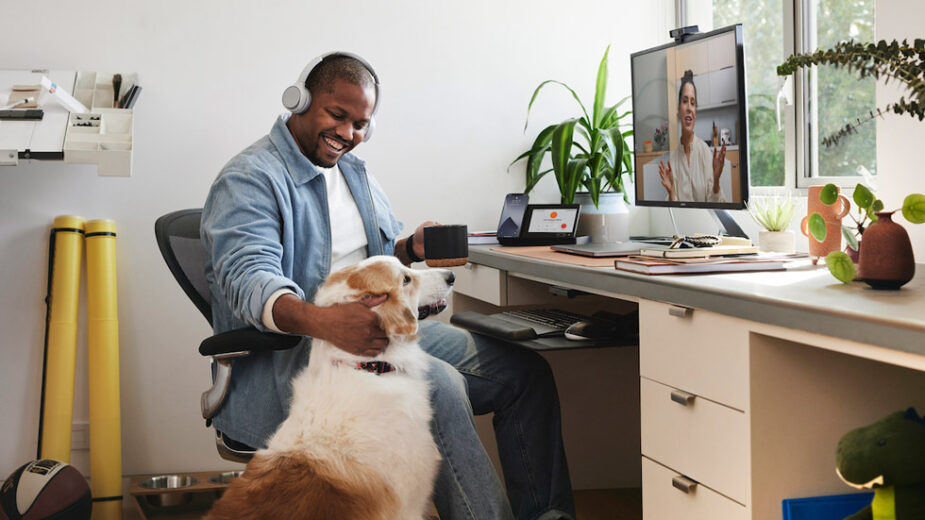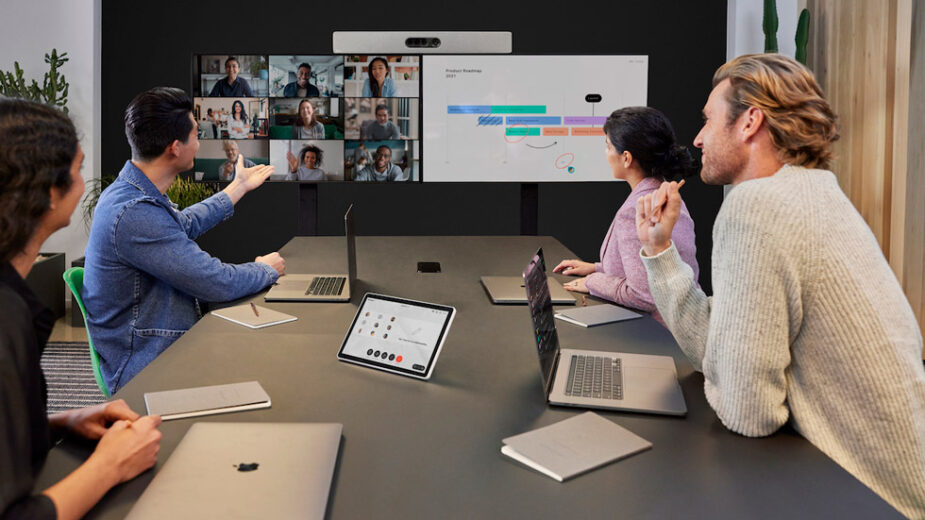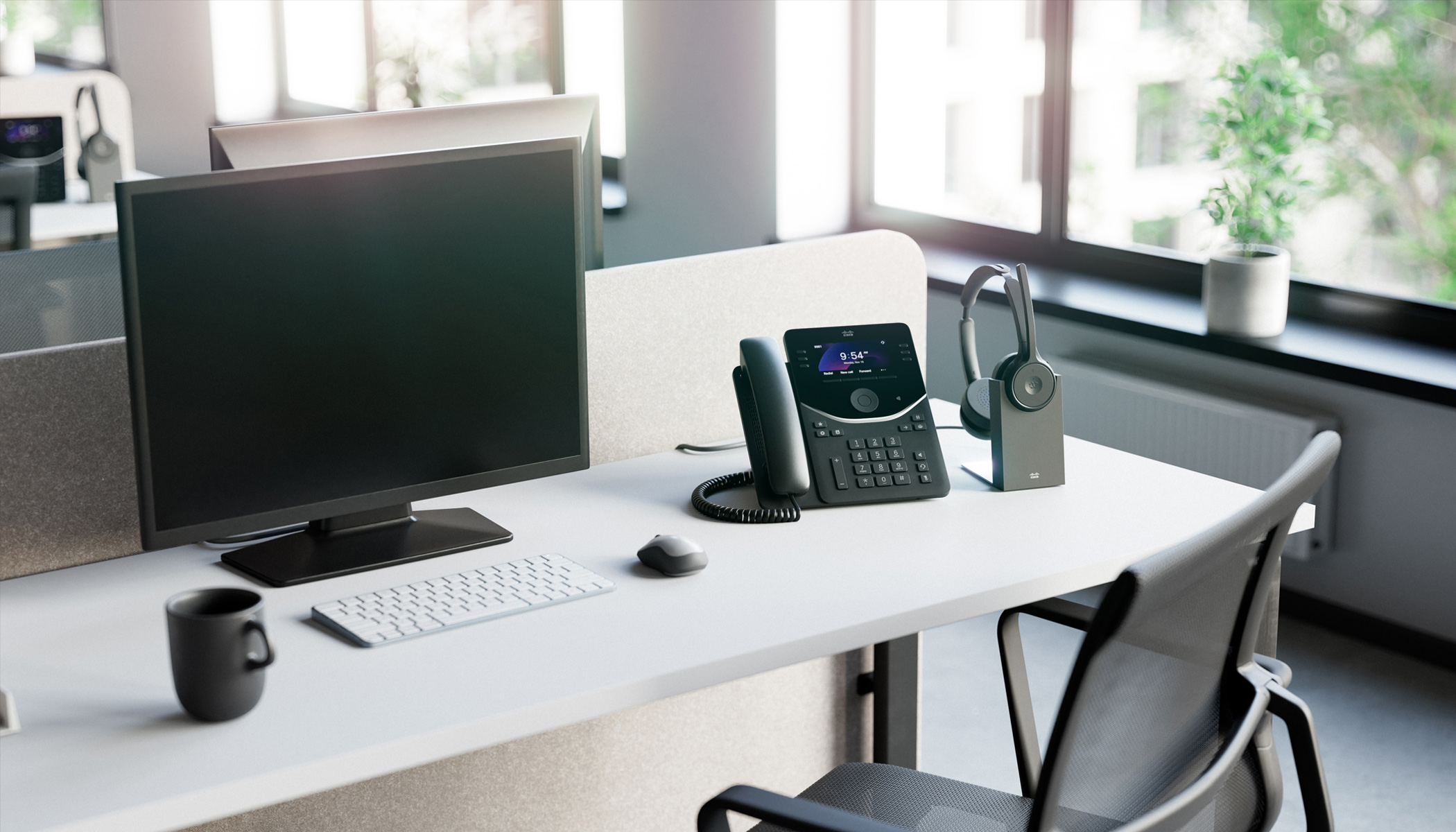Contents: communication tips
What theater can teach us about great communication in virtual meetings
Do you ever find yourself on communication autopilot? Getting through the day, but not being very intentional about how you’re communicating with your team? Or worse, in a communication rut? Struggling to connect, collaborate, and inspire in the way you want to?
In our world of hybrid work, we’ve got to be adept at communicating well in a variety of environments—virtual, in-person, and hybrid.
I recently had the chance to take a course that covered tips for doing just that, led by actors Dillon Heape and Mark Rafael, who have been in numerous films and stage productions and have also taught at organizations including the American Conservatory Theatre and the University of San Francisco.
Drawing insights from the theater world, Heape and Rafael covered several communication strategies that will help you shine when you take the stage in team meetings or presentations, whether virtual or otherwise.
After the course, I reached out to Heape and Rafael to continue the conversation.
Here are a few practical tips they shared that you can apply to improve your presence, authenticity, and all-around effectiveness as a communicator.
Be present
First, let’s talk about presence.
Stage presence, executive presence, professional presence, leadership presence. You’ve likely heard all these words tossed around in trainings you’ve attended in the past.
These terms all point to the common theme that your presence when communicating matters. Heape and Rafael emphasized this throughout the course.
But what exactly is presence and why is it important?

Executive presence and effective communication in video meetings
For the purposes of this article, we’re going to focus our discussion on executive presence.
Harvard Business Review defines executive presence as “The ability to inspire confidence in others to believe in and follow you.”
Executive presence isn’t just for executives. Whether or not you’re in a management role, appearing confident and credible when speaking during virtual meetings is vital. Inspiring confidence, influencing, and persuading will help you be effective in whatever you do.
In her book titled Executive Presence, Dr. Sylvia Ann Hewitt provides some more specifics about what it consists of, calling it “a heady combination of confidence, poise, and authenticity.” Executive presence, Hewitt argues is “the missing link between merit and success.”
How do we communicate this confidence, poise, and authenticity? How do we connect with and inspire our audience, whether we’re presenting to the C-suite or chatting in a team meeting? And furthermore, how do we communicate these things during a virtual meeting, navigating all the unique challenges and opportunities video brings?
The ABCs of executive presence
A core part of having presence and communicating well during a virtual meeting is being present—which means far more than simply joining the meeting.
“Taking the time to be present and available to your colleagues is a gift and because it is not the norm in online communications, it really stands out when you do it,” Rafael said.
Rafael and Heape discussed what they call the ABCs of presence, practical steps grounded in acting theory that will help ensure you’re showing up well in your video meetings and appearing fully present.
Arrive
At the beginning of your meeting, be intentional about how you’re arriving in the space you’ll be in during the video meeting, just as an actor is thoughtful about how they enter the stage. Don’t spend the first few minutes fumbling to adjust your camera and unmute your mic.
“Arriving on video is the digital equivalent to entering a room,” Heape explained. “In real space, your entrance into a room gives a lot of information to everyone present. Walking into the room in a rush, scattered, winded; or coming in a few minutes late; or entering loudly with a raucous comment or anecdote: Any of these could color your time in the room or even cast doubt on your professionalism.”
Avoid similar faux pas when it comes to video conferencing.
“Whether your entrance will be turning your camera on or entering the frame of a camera that is already rolling, be sure you are punctual, grounded, and ready to go so that your audience’s first impression of you is one that will serve your purpose in the meeting,” Heape said.

For more tips on getting your video conferencing setup just right so you can arrive well, see this blog post and also take a look at these lighting and sound best practices.
Breathe & Be Still
Remember to breathe steadily so you have the breath to say what you want to say. Proper breathing can also help you remain calm during the meeting, combatting any nerves that might pop up.
“Always remember the power of an intentional deep breath,” Heape said.
In addition to breathing, remain relatively still. It can be hard for others to focus on what you’re saying when you’re moving around in the frame.
Just as when acting onstage or on camera, all your movements should be purposeful and reinforce, rather than distract from, what you’re saying.
Connect
Strive to truly connect with your conversation partners and lean into the human experience of communication.
“Connection is one of the most important aspects in acting, as well as communication in general,” Rafael said.
While many ingredients contribute to successful connection, here are a few main tips:
Eye contact matters: “While it may feel unnatural, it is important to allot part of the screen time into consciously looking into the webcam and not just looking at the boxes,” Rafael said. “This gives your colleagues the impression of being talked and listened to.”
Avoid multitasking: Focus your full attention on the conversation at hand, Rafael encouraged.
Practice active listening: This is a key pillar in acting that applies to connecting during video meetings as well.
As Harvard’s Robin Abrahams and Boris Groysberg put it, active listening involves listening to understand (both the explicit meaning and underlying emotion), as well as to convey interest, engagement, and caring.
“That means not just waiting your turn to speak but allowing yourself to be impacted by others and being conscious to acknowledge them and make them feel seen and heard,” Rafael said.
Active listening gives you valuable information about how your colleagues are thinking and feeling, so you can respond appropriately and truly connect with them.
“When all else fails: listen. Listening always gets you where you need to go,” Heape said. “On stage, listening to your scene partner—really listening—gives you all the information you need to drive the scene forward. What your character thinks, how they respond, what they do next: it all comes from actively listening to what the other person is saying to you.”
Be authentic
In addition to being mindful about your presence, another vital ingredient for effective communication is authenticity.
While authenticity certainly intertwines with presence, it’s important enough to merit a separate discussion.
You want people to experience a real human when you’re talking during a video meeting, not a robotic recording. Authenticity is the foundation of real relationships and true connection, as well as inspiring confidence and persuading others.
There’s a lot we can learn about authenticity from the acting world. That might sound odd—after all, actors are… acting. However, while they’re not attempting to communicate their own authentic selves on stage, skillful actors are professionals at showing us their character’s authentic self in a way that’s believable and delightfully human. Nothing ruins a scene faster than when it’s painfully obvious that an actor is merely playing a part.

Overcome self-consciousness
Drawing insight from improvisational theater—performances where actors lack predetermined lines and receive little to no direction beforehand, Rafael emphasized that overcoming your self-consciousness is a critical step on the path to communicating authenticity.
“If all your attention is going into to trying to ‘get it right’ or into behaving the way you think you should, we will pick up on that,” Rafael said. “One of the great innovators in the world of improvisation, Keith Johnstone, said ‘Be obvious, be boring, don’t do your best.’ While it might seem counterintuitive, what he meant was that it is much more interesting seeing you with all your warts than seeing you try to be something you’re not.”
Embrace spontaneity
Leaving room for spontaneity also helps you be more authentic.
“A little spontaneity can go a long way,” Heape said. “At the end of the day, someone speaking actively, thoughtfully, and a little spontaneously is much easier to listen to and learn from than someone reading prepared thoughts in a rote or robotic manner.”
To drive this point home, Heape explained the power of spontaneity in improv.
“Improv works because the audience leans into the conceit that the performers collectively have no idea what’s about to happen,” Heape said. “Everyone in the room—performers and audience—agrees that the fun exists in the chaos of discovering, all of us together, what happens next.”
While, of course, “chaos” is likely not your goal for your team meetings, there’s a lot to be said for not being rigidly tied to your notes, for truly connecting with your colleagues, for being open to the conversation flowing in a slightly different direction than you expected.

Do your homework
To allow you the freedom for this spontaneity and authenticity, Heape emphasized that it’s important to do your homework before the meeting. Since most meetings and presentations aren’t 100% improv, it’s helpful to also explore how actors outside of improvisational theater bring a sense of genuineness to their performance.
“In the acting world, we think of the preparation—hours and hours of memorizing lines, perfecting a dialect, crafting a backstory, identifying your character’s actions and intentions—as ‘homework,’” Heape said. “But when the camera is rolling, we don’t want to see the homework. We want to see the thinking, feeling, breathing human being you’ve brought to life.”
As a result, directors will instruct actors to do their homework but then throw it all away when it’s time for their scene. Their preparation will still be within them, supporting them through the scene, but will not be the star of the show.
“Ideally, presenting in a video meeting can happen the same way. Do the prep work, know your content, even rehearse your remarks if you’d like! But when the camera’s rolling, just talk to us. Breathe. Be the human being your colleagues are looking forward to seeing today. Keeping things alive and fresh will go a long way,” Heape said.
See this talk from Dr. Laura Penn for more tips on channeling your authenticity when speaking.
Cultivate a spirit of “yes, and”
Along with being mindful of your presence and authenticity, a third ingredient of great communication is cultivating a spirit of “yes, and.”
Approaching everything with a spirit of “yes, and” rather than “no, but” is another core principle of the improv theater world.
When giving a “yes, and” response, the improv actor accepts what their scene partner has just said or done and builds off that to carry the scene forward. On the other hand, in a “no, but” response, the actor rejects what their scene partner just did, taking control of the scene and trying to force it in the direction they wish. Collaboration breaks down and the scene can stall—no fun for the actors, and no fun for the audience.
The same thing can happen during a video meeting, hindering communication, connection, and collaboration.
“The enemy of ‘yes, and’ is ‘no, but’ or even, ‘yes, but,’ meaning we can unconsciously negate or correct our colleagues’ contributions,” Rafael said.
Of course, we want to avoid groupthink and create an environment where it’s ok to disagree or present alternate ideas. However, how we disagree or react to a colleague’s suggestion matters.
“It is crucial to allow them to feel heard and seen,” Rafael cautions, emphasizing the importance of cultivating a spirit of cooperation, not competition.
Check out this TEDx clip for an example of “yes, and” in action (start watching at 4:19).
What are some practical ways you can practice this “yes, and” approach?
Set the tone: If you’re leading the meeting, consider opening with a brief statement that sets expectations for a “yes, and” spirit. It doesn’t need to be a long speech—perhaps just a quick line or two to set a positive, collaborative tone.
“You can encourage colleagues in a meeting to build collectively on a proposal or in a brainstorming session in a spirit of cooperation, not competition,” Rafael said. “This allows people to leave a meeting with much more sense of satisfaction and contribution.”
Watch your words: “The easiest way to verbally communicate a spirit of “yes, and” in a video meeting is to literally respond to someone by saying ‘yes, and…’!” Heape said. “There are other verbal cues that can function similarly: phrases like ‘Sure! And..’ or ‘I love that! And what if…’ or ‘That’s interesting, I hadn’t thought of that’ all communicate a similar air of partnership.”
Summarize & ask follow-up questions: Take time to let your colleagues know you heard and understand what they shared—before you jump to disagree or offer your own proposal.
“Restate their ideas and check if you got it right and ask for elaboration,” Rafael said.
Nonverbal signals matter: As in the acting world, the actual words we say are only part of what we communicate during a meeting. Our nonverbal cues speak volumes.
“Nonverbally, some additional ways to communicate a ‘yes, and’ intention could include smiling, nodding, or any other affirming gesture that can let the other person know you hear them and want to keep the conversation flowing in a productive direction,” Heape said.
Listen to your internal monologue: Our mindset going into the meeting is also important.
“The real key is keeping the spirit of ‘yes, and’ genuinely alive in yourself,” Heape said. “If you’re listening to someone and your internal monologue is saying ‘Yeah, right!’ or ‘That’s a terrible idea’ or ‘I wish this meeting would end,’ those thoughts probably won’t be masked very well even if you speak more agreeably.”

More communication tips
As we close out our discussion on presence, authenticity, and the spirit of “yes, and,” here are a few more related communication tips to really make what you’re saying pop.
Heape and Rafael encourage using the simple pneumonic MAPS to remember these four principles.
Make eye contact: As discussed earlier, eye contact matters.
Place your camera so you’re able to make natural eye contact. Even if you’re referring to notes or slides, make sure to regularly look back at the camera.
Articulate: Articulate so you can be clearly understood, while still sounding natural. Of course, you don’t want to sound like an over-dramatic actor in a Shakespeare play but take extra care to avoid slurring your speech or mumbling.
Consider recording yourself and check if you’re under or over-articulating.
Also try doing a short vocal warmup before your first meeting of the day or a particularly important presentation to get your vocal cords in order.
Project: Speak loud enough so you can be heard (also making sure your microphone is positioned optimally to pick up your voice). Vary your volume as appropriate for the situation—you may want to speak louder to emphasize a certain point or to express excitement.
Sustain: Start the meeting or presentation strong and maintain your energy throughout. Don’t let your energy or voice drop unless it’s an intentional choice that’s appropriate for the moment.
Communication that connects and inspires
Next time you give a presentation or speak in a team meeting, try one or more of these tips above and watch how your communication improves.
Whether virtual or in-person, let’s strive for excellent communication that leads to deeper connection, better collaboration, and great results.
Learn how you can enhance your team’s communication and collaboration with a sophisticated video conferencing platform that’s built for hybrid work.
Related Reading:
- Collaboration skills: What they are and how to improve them
- For effective team collaboration, turn your video on (the data says so)
- Sound matters: The role of audio quality in video conferencing
- The best lighting for video conferencing, according to experts
Dillon Heape is an actor, director, writer, and musician based in New York City. Heape is non-binary and uses they/them pronouns. As an actor, they have appeared off-Broadway, in regional theater, and in TV and commercials. Heape toured Japan as a featured vocalist in Disney On Classic with The Orchestra Japan, and in 2019 they received the “Fruitie Award” for Outstanding Lead Performance in a Musical for their role in Metropolitan at NYC’s Fresh Fruit Festival. Heape is a graduate of the University of Evansville and holds an MFA in Acting from the American Conservatory Theater.
Mark Rafael (aka Truitt) has been a professional actor for the past 25 years. He has taught at University of San Francisco for the last ten years, and is also on faculty at the American Conservatory Theatre and the Academy of Art University. His Bay Area appearances include Ted Kaczinski Killed People with Bombs, Schrodinger’s Girlfriend, and Joe Goode’s Body Familiar for the Magic Theatre, The Best of Playgrounds 9 & 11, Jihad Jones and the Kalashnikov Babes, ReOrient Festival, and the Bay Area Playwrights’ Festival. He has also appeared regionally at Yale Repertory, American Stage, Wisdom Bridge, and Northlight Theatre, among others. Film and television credits include Titanic, Trauma, Star Trek: Voyager, The Practice, Babylon 5, and Wings. His book, Telling Stories, A Grand Unifying Theory of Acting Techniques, a primer and history of modern acting theories, is published by Smith and Kraus.





